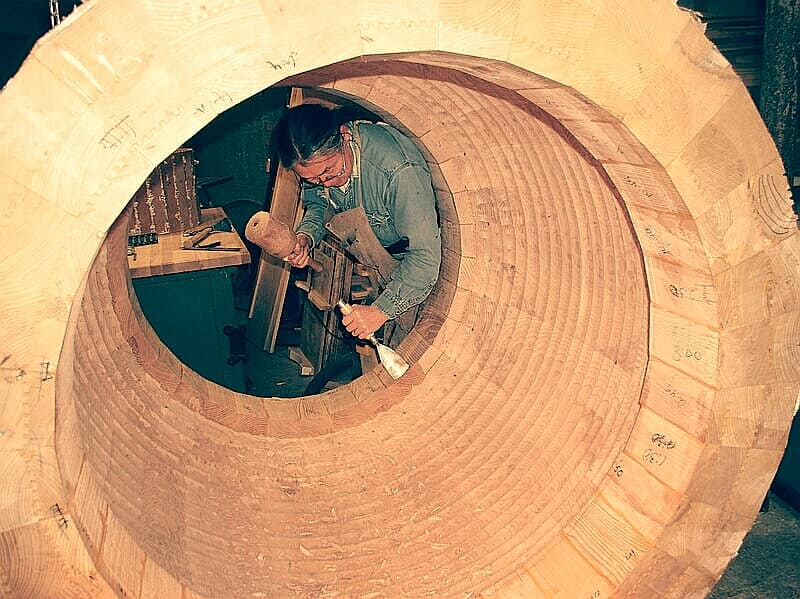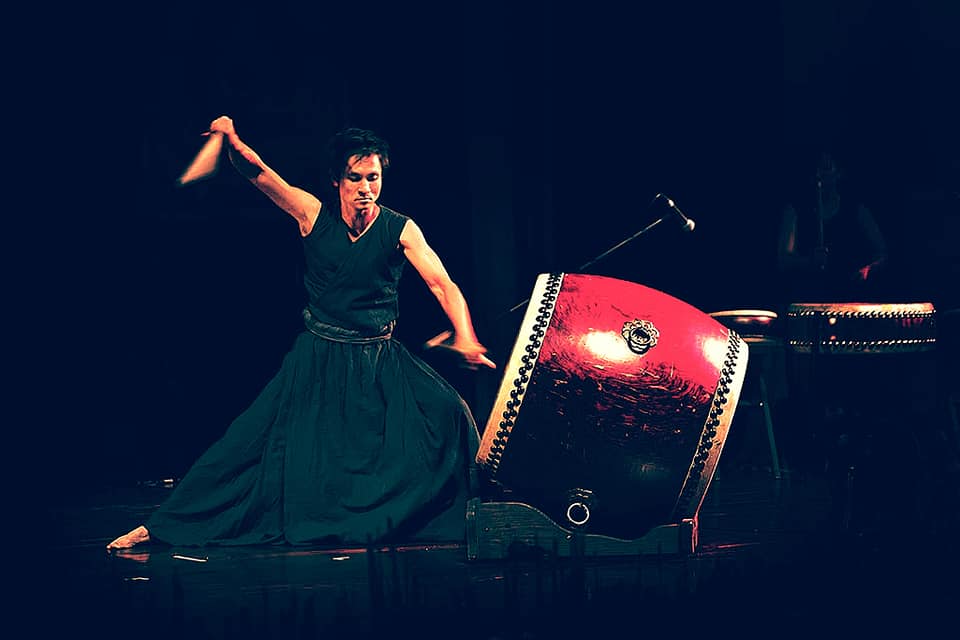Taiko performance styles vary widely across groups in terms of the number of performers, repertoire, instrument choices, and stage techniques. Nevertheless, a number of early groups have had broad influence on the tradition. For instance, many pieces developed by Ondekoza and Kodo are considered standard in many taiko groups.
Kata is the posture and movement associated with taiko performance. The notion is similar to that of kata in martial arts: for example, both traditions include the idea that the hara is the center of being. Author Shawn Bender argues that kata is the primary feature that distinguishes different taiko groups from one another and is a key factor in judging the quality of performance. For this reason, many practice rooms intended for taiko contain mirrors to provide visual feedback to players.
An important part of kata in taiko is keeping the body stabilized while performing and can be accomplished by keeping a wide, low stance with the legs, with the left knee bent over the toes and keeping the right leg straight. It is important that the hips face the drum and the shoulders are relaxed. Some teachers note a tendency to rely on the upper body while playing and emphasize the importance of the holistic use of the body during performance.

Some groups in Japan, particularly those active in Tokyo, also emphasize the importance of the lively and spirited iki aesthetic. In taiko, it refers to very specific kinds of movement while performing that evoke the sophistication stemming from the mercantile and artisan classes active during the Edo period (1603–1868).
The sticks for playing taiko are called bachi, and are made in various sizes and from different kinds of wood such as white oak, bamboo, and Japanese magnolia. Bachi are also held in a number of different styles. In kumi-daiko, it is common for a player to hold their sticks in a relaxed manner between the V-shape of the index finger and thumb, which points to the player.
There are other grips that allow performers to play much more technically difficult rhythms, such as the shime grip, which is similar to a matched grip: the bachi are gripped at the back end, and the fulcrum rests between the performer’s index finger and thumb, while the other fingers remain relaxed and slightly curled around the stick.
Performance in some groups is also guided by principles based on Zen Buddhism. For instance, among other concepts, the San Francisco Taiko Dojo is guided by rei (礼) emphasizing communication, respect, and harmony.The way the bachi are held can also be significant; for some groups, bachi represent a spiritual link between the body and the sky. Some physical parts of taiko, like the drum body, its skin, and the tacks also hold symbolic significance in Buddhism.
Source: Facebook/aikido



